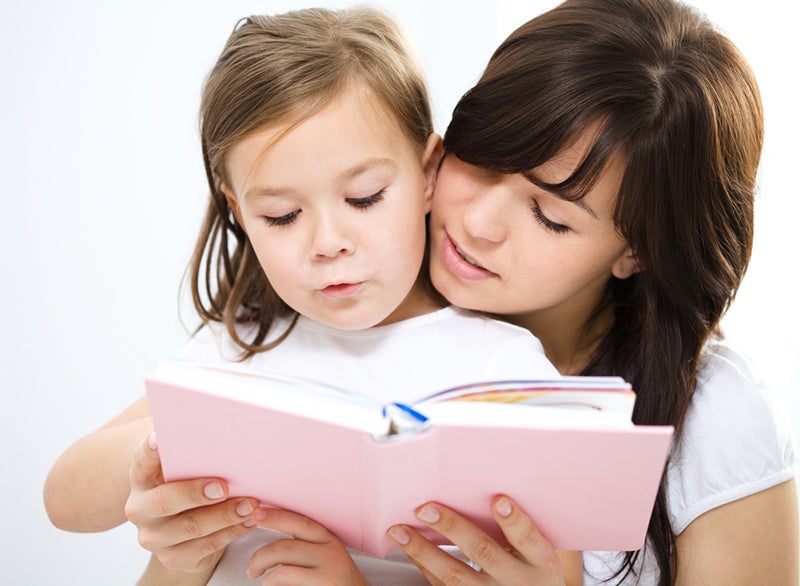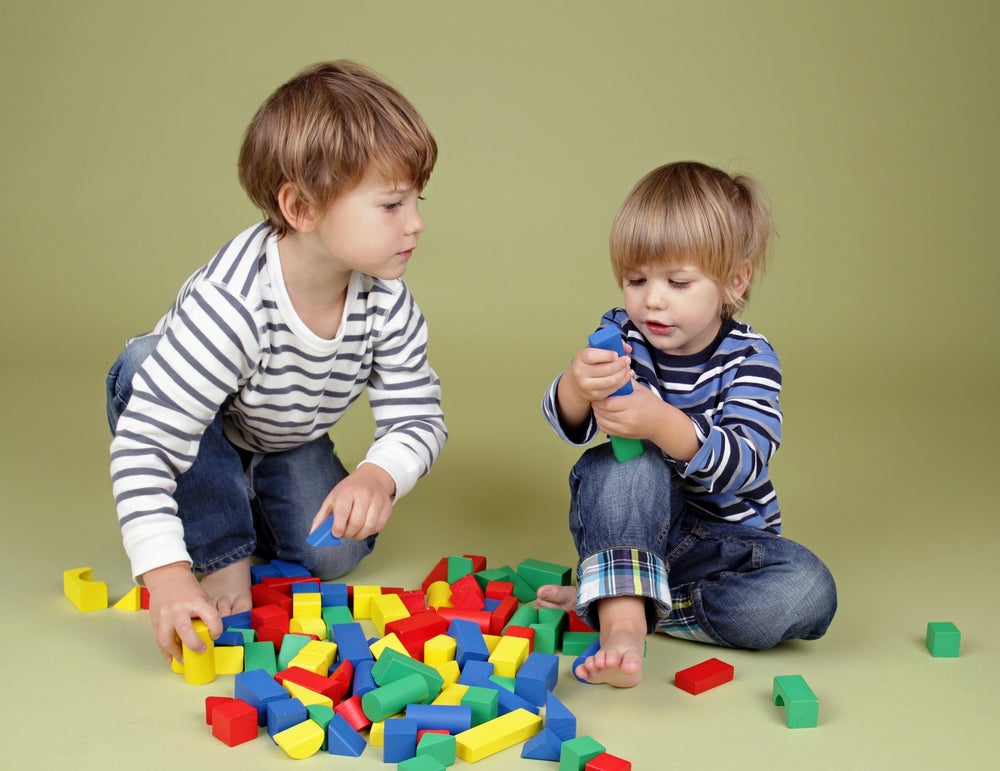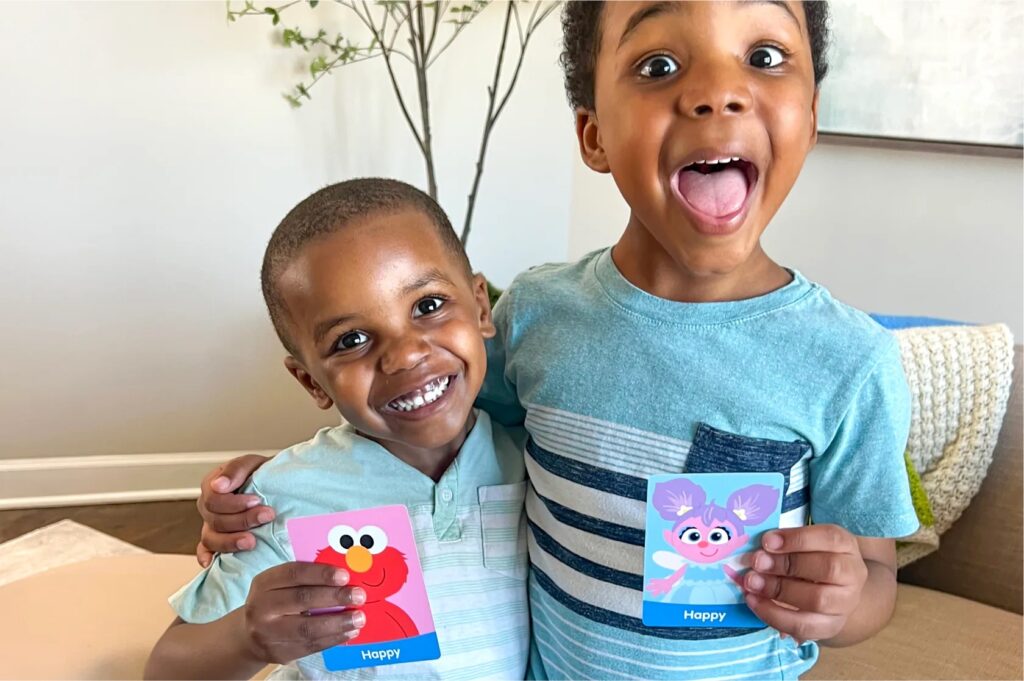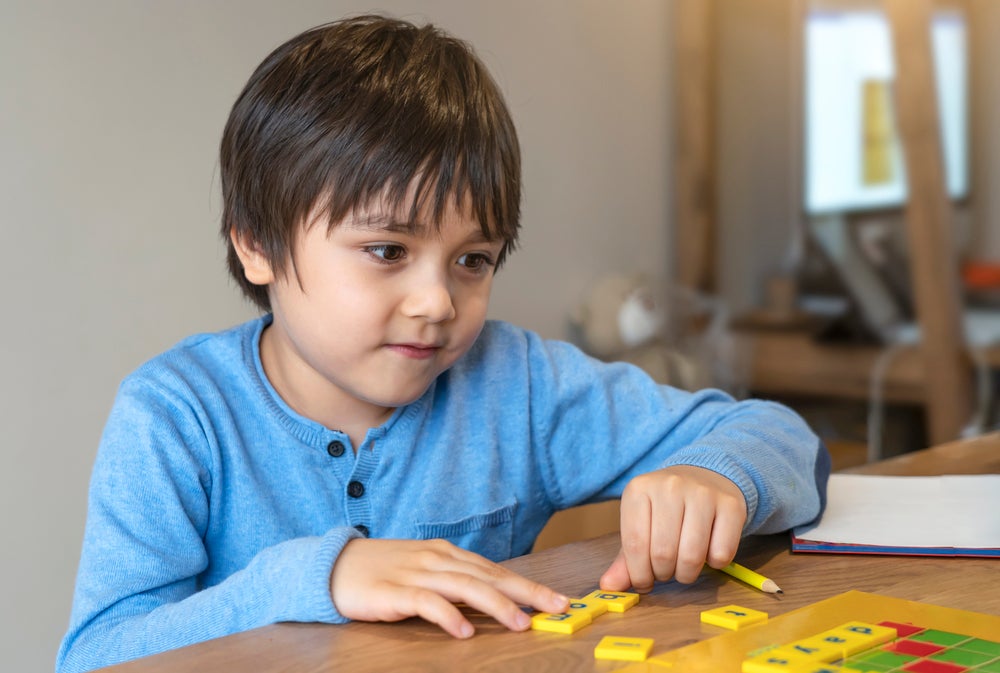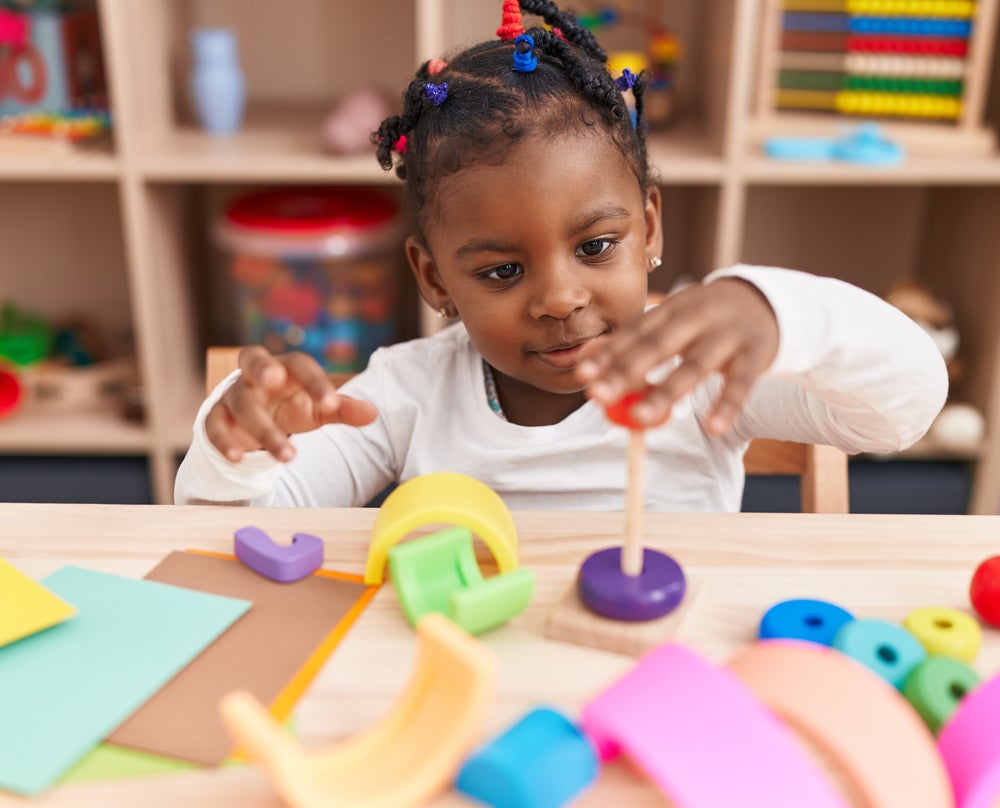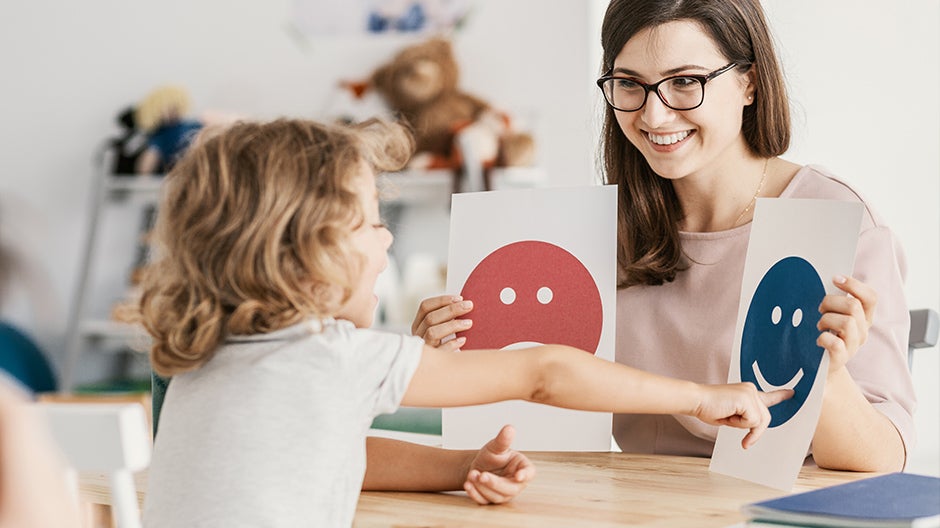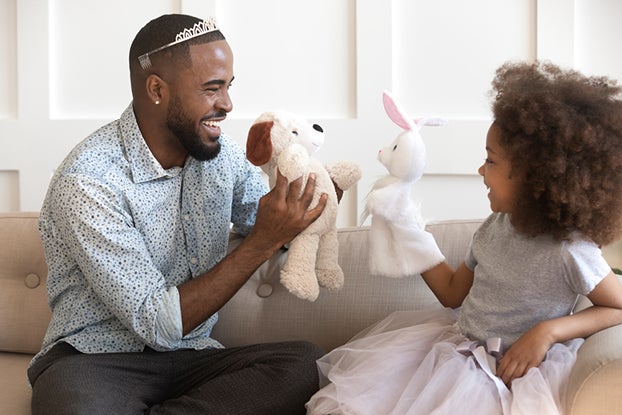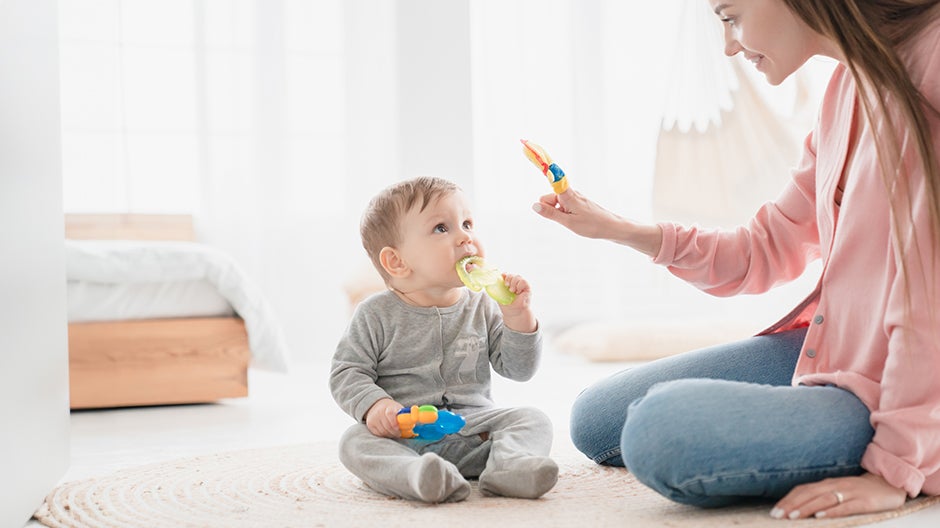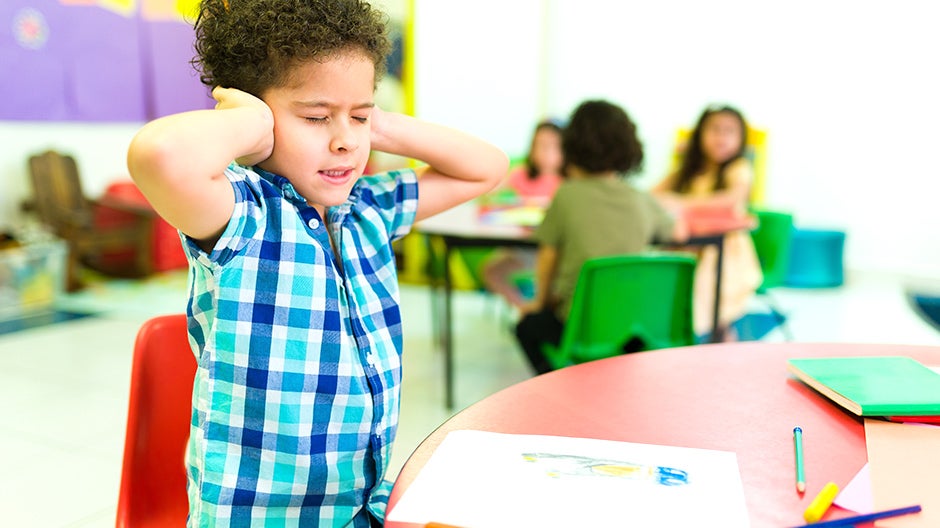What’s the most effective way to start teaching verbs to kids? If you’ve been asking yourself this question, you’ve come to the right place! Learning about verbs is part of developing Core Skills, one of the 5 C’s at the heart of the Begin Approach to helping kids thrive in school and life.
We know how challenging it can be to come up with fun and effective ways to help kids learn verbs. But our learning experts have been creating fun and engaging educational activities for kids for years and have learned a thing or two about effective ways to teach the parts of speech.
In this detailed guide, we’ll share a few methods to practice verbs at home and a list of action words you can start introducing to your child today. Let’s get started!
The Short Cut
- Verbs express what is happening in a sentence (Tom runs, Maria jumps, Susan drives)
- Kids start using verbs very early—some can use 40 by the time they’re 2 years old
- Understanding verbs is an important part of developing language and literacy, a set of essential Core Skills for early learning
- Exploring verbs as a family is fun! There are many active games you can play at home to help your child learn and understand verbs
What Are Verbs?
Before we begin teaching verbs for kids, it’s essential that we first refresh our own memories. What are verbs again?
The Merriam-Webster online dictionary defines a verb as “a word that characteristically is the grammatical center of a predicate and expresses an act, occurrence, or mode of being…” Not exactly the kid-friendly definition we need!
Types of Verbs for Kids
In simpler terms, many verbs can be described as “doing words” because they are the words in a sentence that express what the subject is doing. They help explain what is taking place—Tom runs away, Maria jumps up and down, Susan drives very fast.
While the most common verbs are action verbs, like those shared above, they are just one of three major types of verbs that your child will learn about as they get older: action verbs, helping verbs (or auxiliary verbs), and linking verbs.
Action Verbs
Action verbs are great for teaching kids because they can be used in simple sentences (“Tom sings.”). A single action verb can also be a sentence by itself (“Dance!”). They’re very versatile.
Helping Verbs
As you probably guessed, helping verbs help! They appear in front of the action and give information about when that action happened. For example, in the sentence, “I am reading a book,” the helping verb “am” helps to express the action verb “reading.”
Linking Verbs
Linking verbs, on the other hand, don’t express any sort of action. Instead, they connect or “link” the subject to a word that describes it, which can be an adjective or noun.
For example, in the sentence “The sky is blue,” the linking verb “is” links the subject “sky” to the predicate adjective “blue.” It connects the two parts and helps the listener or reader understand what’s being said.
There are only three main linking verbs in the English language: “to be,” “to become,” and “to seem.” These linking verbs can also take on different forms, such as “is,” “are,” “was,” “were,” etc.
You probably use all three types of verbs daily without even thinking about it. Now, it’s time to help your child do the same.
It’s important to note that early learners are likely too young to go into detail about what the different verb types are or what they’re called. So unless they seem interested in the puzzle of how sentences work, you don’t need to explain the differences or expect them to know what a linking verb is.
They’ll pick it up naturally when they’re ready. Instead, focus on using verbs correctly.
How to Recognize Verbs
There are a few ways to help kids recognize verbs in a sentence. One of the most common is to look closely at its location compared to the subject of a sentence. Often, verbs come after nouns and pronouns (usually the subject of the sentence).
So, from one of the examples above—“Maria jumps up and down”—the verb (jumps) comes directly after the noun (Maria).
Another way to help kids recognize a verb (without having to think about the sentence structure) is to encourage them to ask “Can I…?” Can I jump, dance, scream, eat, laugh, run, etc.? If the answer is “yes,” then the word is a verb.
Why Is It Important to Teach Kids about Verbs?
Every single sentence needs a verb. Without one, the sentence is incomplete.
If kids don’t use verbs, they’ll have difficulty expressing themselves. Other people might not understand what they’re saying since verbs are so important to the English language.
And as kids get older and start writing, this foundational knowledge about verbs will help them have a better sense of grammar so they can write more clearly.
When Will Your Child Use Verbs in Their Speech?
Many factors can influence a child’s language development. These include gender, environment, genetics, and more. That makes it challenging to know how many verbs kids should use when they’re toddlers. But it also means that it’s OK for your child to be on their own path!
At 24 months, most toddlers can say between 5 and 40 verbs. If your child is on the lower end, you can assist them by actively introducing new verbs regularly through different games and activities.
And if you’re concerned about your child’s language development, ask their pediatrician about it at your next appointment. They’ll be able to evaluate whether this is something your child needs additional help with.
There are many types of verbs (action, auxiliary, regular, irregular, etc.). As children get older and are exposed to more words in the English language, they will naturally start introducing a variety of verbs into their speech.
Here’s a look at what you can expect from your growing child.
24 – 35 Months Old
Kids at this age typically use present progressive verbs. These verbs help express an activity that’s presently or was recently happening. They are instantly recognizable with their “-ing” ending. For example: driving, eating, swimming, etc.
3 – 4 Years Old
At this age, kids start to use irregular past-tense verbs. These verbs express what happened in the past without the use of an “-ed” ending. For example: went, hurt, hit, etc.
Kids at this age use some irregular verbs correctly and begin to use “-ing” words as well. They also learn how to use regular past tense verbs with “-ed” endings (played, liked, etc.), which describe what has already happened.
4 Years and Older
Even though preschoolers have a lot of verbs in their vocabulary, they probably won’t be able to identify which word is a verb if you ask them to find one. And that’s OK! Classifying words is a more advanced skill that they’ll tackle as they progress in school.
As kids enter pre-K and kindergarten, they may have a basic understanding of how some verbs work even if they haven’t learned the term “verb” yet. They may be able to recognize common verb endings and use them correctly most of the time.
They may also struggle with irregular verbs. It’s normal for kids to use “ed” endings on all verbs at this age, even if they’re supposed to end differently.
In fact, it’s not just normal; it’s a step in the right direction! It shows that kids are generalizing grammar rules, which is proof that their understanding of language is progressing.
The more they listen to and use language, the better their grasp of verbs will be. Before you know it, they won’t be making the same mistakes anymore.
For now, the important thing is using verbs when they speak to identify what someone, or something, is doing. This will prepare them for future language development.
How to Practice Verbs with Kids
Now that you know what verbs are and why it’s vital to teach verbs to kids, let’s look at some engaging activities to help them use these action words.
We love teaching through games because learning through play is so effective, especially for young kids!
1. Action Charades
What You’ll Need
- Pen or marker
- Pieces of paper
- Hat or bowl
- List of verbs (cook, jump, wiggle, shake, nod, etc.)
What to Do
Playing charades is one of the simplest ways to help your child practice verbs. To set up, write verbs on pieces of paper (one verb per paper), drop them into a hat or bowl, and then mix them up.
If a kid isn’t yet a reader, assign them a partner (like an older sibling or adult) who can read for them or opt for picture clues instead of written ones. These simple rule changes help make the game accessible for everyone in the family.
Once you’re set up, players will take turns pulling the verbs from the hat or bowl and proceed to act them out. The rest of the family tries to guess the verb. You can also add a timer for 30 seconds. How many words can you guess in half a minute?
This activity can be great for the whole family on game night. To keep things fresh and exciting, change the verbs each time you play (this might require you to have a thesaurus nearby!).
In addition to learning verbs, your child has the opportunity to build their vocabulary by playing this game. They’ll be exposed to new words, understand their meanings as they are acted out, and learn synonyms as others guess the action that is taking place.
2. The Verb Game

What You’ll Need
- Marker or pen
- Paper
What to Do
Most kids understand verbs as the “doing words” in a sentence. But what happens when you replace one verb with another? How does that affect the sentence as a whole?
You can help your child answer these questions by playing the verb game. Write down a sentence with an action. For example, “I can jump 10 times.” Next, read your sentence aloud to your child. Once they hear it, challenge them to do what it says.
Then, players take turns changing the action verb. It might look like this: “I can shout ten times.” “I can wiggle ten times.” “I can stick my tongue out ten times,” etc.
Don’t be too concerned about which verb you add. The sillier the better!
This is a great activity to emphasize that verbs are the action words in a sentence and changing them will change the meaning of that sentence.
3. Verb Time Machine
What You’ll Need
- Construction paper
- Two blank sheets of other paper
- Crayons
- Scissors
- Plastic arrow game spinner
What to Do
Encourage your child to draw a time machine on a blank sheet of paper and color it in. They don’t have to be the best artist here—just a simple rectangular shape with an antenna at the top will be fine.
On the construction paper, assist your child in drawing a single road in the center. This road can have numbers from one (at the bottom) to seven (at the top).
After doing so, help your child cut out the time machine and paste it onto the construction paper at the end of the road they’ve drawn.
Lastly, help your child draw a large circle on your second blank sheet of paper. Divide this circle into three sections: Right Now, Yesterday, and Tomorrow. Then place your spinner at the center.
The concept of this activity is simple: Your child will race to get to the time machine at the end of the road.
Here are the steps to get there:
- Start by saying a verb (for example: jump)
- Spin the plastic arrow game spinner
- Whoever is playing will say the verb in the tense of where the spinner lands. For instance, if it lands on “yesterday,” the player needs to say jumped.
- If you get it right, move ahead one space on the road to the time machine. Who will make it to the time machine first?
This is a great activity to help your child practice their verb tenses. You can even ask them to create a sentence with that verb tense for an extra point!
If you notice that your child is struggling with irregular verbs, point out the correct ending. As you include that specific verb in gameplay, they’ll have more opportunities to learn its correct ending for each tense.
4. The Action Verb Alphabet
What You’ll Need
- Nothing
What to Do
This game is for slightly older kids who are familiar with letters and sounds. Otherwise, your child’s brain will have a hard time focusing on the verb component while also trying to think about the letter sounds. If that happens, it might become too frustrating.
Tell your child that the two of you will try to brainstorm a verb for each letter of the alphabet. Let them know it’s just for fun and not a competition.
Start with “A.” Say the “A” sound and ask your child if they know anything you can do that starts with that sound.
If they don’t, that’s OK. You can prompt them by saying, “‘Ask’ is something we can do that starts with an ‘A’ sound. Can you ask me a question?”
Then, move on to the letter “B.” Try the words bounce, bake, bark, and build, or any other “B” verbs you can name.
Remember to have your child act out the verb if possible. When they hear the word and do something with their body, it activates more areas of the brain, and they’re more likely to remember it.
If you suggest a word your child doesn’t know, take time to explain what it means. It’s a fun way to expand your child’s vocabulary.
Continue thinking of verbs for each letter of the alphabet. If you get stuck, you can check out our cheat sheet below or agree to skip the letter and move on. Either way works as long as it’s fun!
If you do get stuck, here are two ideas for each letter:
- A – add, act
- B – bark, build
- C – catch, crawl
- D – drink, dream
- E – eat, explore
- F – find, fly
- G – growl, grumble
- H – hop, howl
- I – itch, inspect
- J – jump, jingle
- K – kick, keep
- L – lick, listen
- M – milk, mow
- N – nap, neigh
- O – open, order
- P – play, peek
- Q – quack, question
- R – run, roar
- S – skip, slide
- T – talk, trade
- U – unzip, use
- V – vroom (like a car), vacuum
- W – walk, wag
- X – X-ray, Xerox
- Y – yawn, yodel
- Z – zigzag, zip
You’ll probably think of many more. You could even create your own ABC verb book with some paper and crayons with all these verbs you’ll name.
To extend this game even more, check out our HOMER Explore Letters Kit and get out the magnet letters. Stick up a random letter and ask your child to name a verb that starts with it. This activity is a fun way to review what you’ve been working on.
5. The Verb Toss
What You’ll Need
- Pen or marker
- Index cards
- A pair of socks or small, soft ball for each player
What to Do
Roll up a pair of socks into a tight ball for each player. Then, use the pen to draw a simple verb action on each index card. Don’t worry about making it fancy. You could even have your child help with this part.
Here are a few words you can include:
- Dance
- Jump
- Eat
- Sweep
- Mop
- Talk
Once the cards are ready, flip through them quickly with your child to make sure they can identify each one. If they can’t, explain what the picture is supposed to be.
Then, spread the verb cards face up on the floor. Ask your child to back up several feet and toss their sock ball onto the words. You can set the distance of the toss by their age and throwing ability. They can always take a step closer if needed.
When they’ve successfully thrown the sock ball, let them walk over and see which card their ball landed on. Ask them to say the verb and do the action.
For example, if the card has a picture of someone eating, your child pretends to eat. If it has “dance” on it, they dance around the room.
After your child finishes the action, have them pick up both the card and their sock ball, give you the card, and stand back at their starting point to play again.
Continue throwing, saying the verb, and doing the action until the cards are all picked up.
List of Verbs for Kids
To get started with some of the activities above, you’ll need a list of verbs for children to practice.
Here are some examples you can use:
- Run
- Shout
- Jump
- Sing
- Dance
- Read
- Swim
- Skip
- Kick
- Write
Verb Tenses
One of the activities above (Verb Time Machine) helps kids practice their verb tenses. Games like this are great because kids often have trouble grasping the concept of different tenses (there are a lot of them!).
Practicing verb tenses (past, present, future, and ongoing) helps kids get comfortable with the idea.
As you’re teaching verb tenses, it helps to emphasize the words that help the verbs. For example, change the sentence, “I wash my clothes” to, “I am washing my clothes” or, “I will wash my clothes.”
You don’t necessarily need to explain the process of changing the verbs in detail. Kids learn best through repetition, so the more practice they get the easier it will be to grasp this concept.
Here are a few examples of verb tense changes that you can add to the activities above:
- I walk to school — I am walking to school — I walked to school — I will walk to school
- I eat some food — I am eating some food — I ate some food — I will eat some food
- He laughs — He is laughing — He laughed — He will laugh
- He runs fast — He is running — He ran fast — He will run fast
After you’ve practiced a bit, listen to your child talk and praise them for using verb tenses correctly. For instance, if they typically say, “I eated my food,” congratulate them if they say, “I ate my food.”
Noticing what your child is doing right can be a big encouragement, so watch for those “I did it!” moments.
Learning Verbs for Kids with Begin
Verbs are an essential part of our speech because they help us express what action is taking place, was taking place, or will take place. The activities above will help your family explore verbs for kids while having fun.
At Begin, we know developing early language skills has a huge impact on a kid’s success in school and beyond. To give your child their best start toward achieving their fullest potential, check out our award-winning HOMER app. It’s full of fun, engaging activities that help kids learn the building blocks of language—and just 15 minutes a day has been proven to increase early reading scores by 74%!
